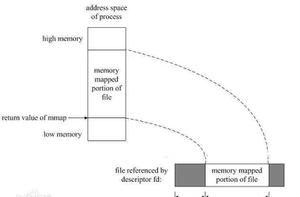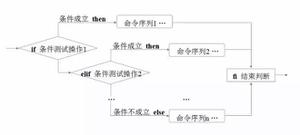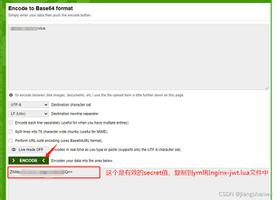python re正则表达式模块(Regular Expression)
模块的的作用主要是用于字符串和文本处理,查找,搜索,替换等
复习一下基本的正则表达式吧
.:匹配除了换行符以为的任意单个字符
*:匹配任意字符,一个,零个,多个都能匹配得到 俗称贪婪模式
+:匹配位于+之前的一个或者多个字符
|:匹配位于|之前或者之后的字符
^:匹配行首
$:匹配行尾
?:匹配位于?之前的零个或者一个字符,不匹配多个字符
\:表示 \ 之后的为转义字符
[]:匹配[]之中的任意单个字符,[0-9]表示匹配0到9任意一个数字
():将位于()之内的的内容当作一个整体
{}:按{}中的次数进行匹配,100[0-9]{3}表示在100之后任意匹配一个3位数(100-999)
python中以\开头的元字符:
| 特殊序列符号 | 意义 |
| \A | 只在字符串开始进行匹配 |
| \Z | 只在字符串结尾进行匹配 |
| \b | 匹配位于开始或结尾的空字符串 |
| \B | 匹配不位于开始或结尾的空字符串 |
| \d | 相当于[0-9] |
| \D | 相当于[^0-9] |
| \s | 匹配任意空白字符:[\t\n\r\r\v] |
| \S | 匹配任意非空白字符:[^\t\n\r\r\v] |
| \w | 匹配任意数字和字母:[a-zA-Z0-9] |
| \W | 匹配任意非数字和字母:[^a-zA-Z0-9] |
正则表达式语法表
| 语法 | 意义 | 说明 |
| "." | 任意字符 | |
| "^" | 字符串开始 | '^hello'匹配'helloworld'而不匹配'aaaahellobbb' |
| "$" | 字符串结尾 | 与上同理 |
| "*" | 0 个或多个字符(贪婪匹配) | <*>匹配<title>chinaunix</title> |
| "+" | 1 个或多个字符(贪婪匹配) | 与上同理 |
| "?" | 0 个或多个字符(贪婪匹配) | 与上同理 |
| *?,+?,?? | 以上三个取第一个匹配结果(非贪婪匹配) | <*>匹配<title> |
| {m,n} | 对于前一个字符重复m到n次,{m}亦可 | a{6}匹配6个a、a{2,4}匹配2到4个a |
| {m,n}? | 对于前一个字符重复m到n次,并取尽可能少 | ‘aaaaaa'中a{2,4}只会匹配2个 |
| "\\" | 特殊字符转义或者特殊序列 | |
| [] | 表示一个字符集 | [0-9]、[a-z]、[A-Z]、[^0] |
| "|" | 或 | A|B,或运算 |
| (...) | 匹配括号中任意表达式 | |
| (?#...) | 注释,可忽略 | |
| (?=...) | Matches if ... matches next, but doesn't consume the string. | '(?=test)' 在hellotest中匹配hello |
| (?!...) | Matches if ... doesn't match next. | '(?!=test)' 若hello后面不为test,匹配hello |
| (?<=...) | Matches if preceded by ... (must be fixed length). | '(?<=hello)test' 在hellotest中匹配test |
| (?<!...) | Matches if not preceded by ... (must be fixed length). | '(?<!hello)test' 在hellotest中不匹配test |
匹配的标志和含义
| 标志 | 含义 |
| re.I | 忽略大小写 |
| re.L | 根据本地设置而更改\w,\W,\b,\B,\s,\S的匹配内容 |
| re.M | 多行匹配模式 |
| re.S | 使“.”元字符匹配换行符 |
| re.U | 匹配Unicode字符 |
| re.X | 忽略需要匹配模式中的空格,并且可以使用"#"号注释 |
文本内容(提取Linux下的password文件)
man:x:6:12:man:/var/cache/man:/bin/nologin
re模块中有3个搜索函数,每个函数都接受3个参数(匹配模式,要匹配的字符串,进行匹配的标志),如果匹配到了就返回一个对象实例,么有就返会None.
findall():用于在字符串中查找符合正则表达式的字符串,并返回这些字符串的列表
search():搜索整个字符串,返回对象实例
match():只从第一个字符开始匹配,后面的不再匹配,返回对象实例
lovelinux@LoveLinux:~/py/boke$ cat text
man:x:6:12:man:/var/cache/man:/bin/sh
lovelinux@LoveLinux:~/py/boke$ cat test.py
#/usr/bin/env python
#coding:utf-8
import re
with open('text','r') as txt:
f = txt.read()
print re.match('bin',f)
print re.search('bin',f).end()
lovelinux@LoveLinux:~/py/boke$ python test.py
None
34
lovelinux@LoveLinux:~/py/boke$ vim test.py
lovelinux@LoveLinux:~/py/boke$ python test.py
None
<_sre.SRE_Match object at 0x7f12fc9f9ed0>
返回是对象实例有2个方法,
start():返回记录匹配到字符的开始索引
end():返回记录匹配到字符的结束索引
lovelinux@LoveLinux:~/py/boke$ python test.py
None
31
34
lovelinux@LoveLinux:~/py/boke$ cat test.py
#/usr/bin/env python
#coding:utf-8
import re
with open('text','r') as txt:
f = txt.read()
print re.match('bin',f)
print re.search('bin',f).start()
print re.search('bin',f).end()
以上是 python re正则表达式模块(Regular Expression) 的全部内容, 来源链接: utcz.com/z/321221.html









